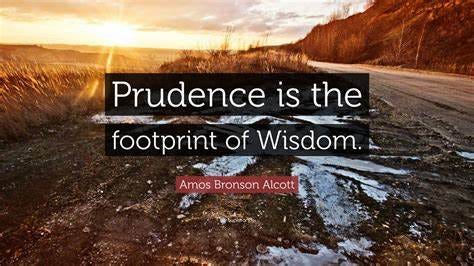Nice to meet you. I am Prudence. Have we ever met?
The See-Judge-Act method or Observe-Discern-Act method, as many have called it, is used for theological reflection and social action. The key is ACT. It involves seeing reality, judging/discerning/reflecting, and finding ways to act.
The See-Judge-Act method has a rich historical lineage. It was employed by early Greek Philosophers and is exemplified in the Sermon on the Mount. The early followers of Jesus, particularly as a teaching tool and a way of life, also utilized this method.
Pope John XXIII and Pope Paul VI adopted this method in their encyclicals. Pope John Paul II often used it in his talks. Pope Francis has used it in his encyclicals, such as Laudato Si'—perhaps the most significant piece of Catholic Social Teaching since Rerum Novarum.
Cardinal Joseph Cardijn created the modern understanding of the See-Judge-Act method, leveraging its roots in Thomas Aquinas' description of the intellectual virtue of prudence. The Latin American Episcopal Council (CELAM) and liberation theologians of many denominations have used and incorporated the method into their own causes for education, collaboration, and change. The method is integrated in the US with recent advancements made by North American practical theologians.
The See-Judge-Act Method is the KEY pastoral method we see in the Young Christian Workers movement, The Christian Family Movement, and the Young Christian Students movement, all developed by Joseph Cardijn and his team. It's a practical approach to social engagement and personal reflection, empowering individuals to take action.
See: Observe and analyze a specific situation objectively. Observing the world around us and identifying the needs and injustices present.
Judge: Critically evaluate the situation using ethical and moral principles. Analyzing the situation in light of faith and Christian social principles/teaching to discern how best to bring about the kingdom of heaven here and now.
Act: Take concrete, practical steps to improve the situation. We are taking action to address the identified needs and injustices.
It's important to note that while the "See, Judge, Act" method is a valuable tool for reflection and action, some have suggested that the "Judge" step might be better replaced with "Discern" or "Reflect." This is because "Judge" in our modern culture sometimes implies a sense of "condemnation," which may not be the intended meaning, and the message may now get lost.
Ultimately, the method aims to inspire individuals and communities to take action to build a more just and compassionate world.
PRUDENCE
Prudence is one of the cardinal virtues we often overlook today, especially in a world on fire with many houses divided. Prudence is a virtue of wisdom, good judgment, and careful decision-making. It involves:
Thoughtful deliberation before taking action
Assessing potential consequences and risks
Making practical and sensible choices
Exercising caution and restraint
Balancing immediate desires with long-term goals
Prudence is the foundation for the greater good in philosophical and moral contexts. Prudence helps individuals make wise, rational decisions that promote personal and collective well-being.
Prudence is not just a part of the See-Judge-Act method, it's central to it. It guides each step and ensures that actions are thoughtful, just, and aligned with Christian values. This depth and complexity can make you feel the richness of the method.
Here's how prudence integrates with and enhances this method:
1. Prudence in the See-Judge-Act Framework
See (Observation and Analysis)
Prudence guides clear perception:
The prudent person observes situations attentively and clearly, avoiding biases or hasty judgments.
Discernment of truth:
Prudence helps distinguish between appearances and reality, ensuring the facts are accurate and the issue is fully understood.
2. Judge (Reflection and Discernment)
Applying moral principles:
Prudence helps interpret the situation through the lens of the Gospel and Catholic teaching, weighing various perspectives and possible outcomes.
Evaluating the good:
Prudence enables a person to identify the best action to promote justice, love, and the common good.
3. Act (Implementation and Commitment)
Choosing wisely:
Prudence ensures that the selected action is morally sound but also practical and achievable in the given context.
Adapting to circumstances:
Prudence allows flexibility and responsiveness, adjusting plans to ensure that actions remain aligned with their intended purpose.
Examples: When analyzing poverty, racial injustice, economic injustice, and political strife in a community, prudence ensures attention to both statistical data and the lived experiences of those affected. In addressing climate change, prudence discerns actions that balance immediate needs with long-term sustainability rooted in care for creation. When addressing homelessness, prudence helps prioritize immediate shelter while working on systemic changes like affordable housing.
Prudence is a Virtuous Anchor in our method.
Prudence ensures that the See-Judge-Act method avoids extremes:
Inaction due to overanalysis (e.g., endless reflection without concrete steps). Prudence requires a clear and accurate understanding of the situation at hand. The "See" step embodies this by calling for a thorough observation of circumstances, facts, and context.
Impulsive action without understanding the situation or its moral implications. Prudence prevents jumping to conclusions or acting without sufficient information. By "seeing," individuals gather necessary insights to avoid errors in judgment. I
In the "Judge" step, prudence helps discern the moral implications of the observed situation, considering Gospel values and Christian social teaching. Prudence weighs possible responses, distinguishing between immediate needs and long-term solutions while aligning actions with the common good.
Act: Prudence and Decision
Prudence culminates in action.
After seeing and judging, prudence ensures the right course of action is chosen and executed effectively. The "Act" step reflects this, requiring moral resolve and practical wisdom to implement decisions.
Flexibility and foresight:
Prudence remains active even in implementation, adapting to new developments and ensuring consistency with the intended good.
Pope Francis highlights prudence in his call for thoughtful action, stating in Laudato Si':
"Prudence must remain present in decisions to ensure that they are sustainable and rooted in justice and compassion."
Through prudence, the See-Judge-Act method becomes not just a process but a virtuous practice of discernment and commitment to Gospel values in the real world.
Featured in: Amos Bronson Alcott Quotes


